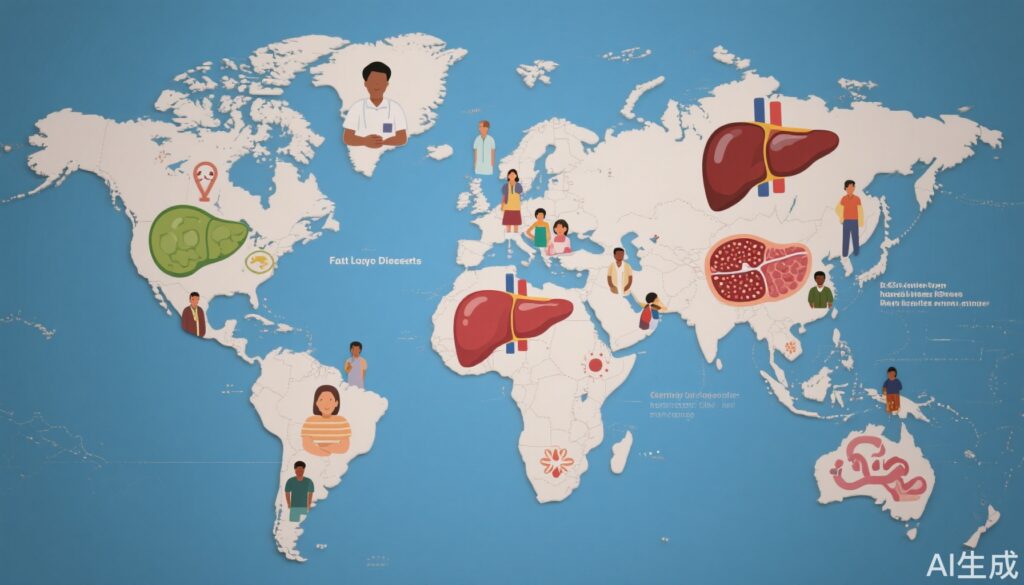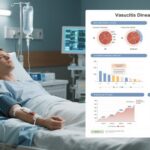Highlight
– More than 60% of global liver cancer cases are preventable, but the incidence is projected to double by 2050 due to rising obesity and metabolic liver disease.
– The Lancet Commission identifies metabolic dysfunction-associated steatotic liver disease (MASLD) and its severe form, MASH, as key drivers of future hepatocellular carcinoma (HCC) burden.
– Ten actionable recommendations target viral hepatitis, alcohol use, obesity, environmental risks, and healthcare disparities to reduce new cases and deaths.
– Achieving an annual 2–5% reduction in new cases could prevent up to 17 million liver cancers and 15 million deaths by 2050.
Background
Liver cancer, predominantly hepatocellular carcinoma (HCC), ranks among the most lethal malignancies worldwide. Despite advancements in antiviral therapies and vaccinations, the global burden of HCC continues to rise, with projections indicating 1.52 million new cases and 1.37 million deaths annually by 2050 (The Lancet Commission, 2023). Historically, viral hepatitis (HBV, HCV) and alcohol-related liver disease have been primary risk factors. However, the epidemiological landscape is shifting: obesity and metabolic dysfunction-associated steatotic liver disease (MASLD, formerly NAFLD/NASH) are emerging as leading causes, especially in high-income and rapidly industrializing nations. This evolving pattern underscores the need for integrated prevention and early intervention strategies.
Study Overview and Methodological Design
The Lancet Commission report, published in July 2023, synthesizes data from global cancer registries, cohort studies, and public health surveillance to project trends in HCC incidence and mortality. The Commission’s analysis encompasses population-based estimates, risk stratification, and scenario modeling to evaluate the impact of risk-factor modification. Although the report is not a single primary study, it draws on robust epidemiological research, including meta-analyses and large-scale population cohorts, to inform evidence-based recommendations.
Key Findings
– At least 60% of HCC cases worldwide are attributable to preventable risk factors: viral hepatitis, alcohol consumption, and MASLD/MASH.
– MASLD-related HCC is poised for the most significant increase, with the share of cases linked to metabolic dysfunction-associated steatohepatitis (MASH) projected to rise from 8% to 11% (a 35% increase) by 2050.
– Without intervention, new liver cancer cases are expected to double over the next 25 years.
– Achieving a 2–5% annual reduction in new cases could avert up to 17 million cases and 15 million deaths by 2050.
– High-risk populations—particularly individuals with diabetes or obesity in the US, Europe, and Asia—require urgent preventive strategies.
Clinical Implications
For clinicians, these findings emphasize the importance of routine liver health assessment in patients with obesity, diabetes, or metabolic syndrome. Noninvasive screening tools (e.g., elastography, risk calculators) should be integrated into primary care. Public health systems must prioritize HBV vaccination, HCV screening/treatment, and strong alcohol reduction policies. The Commission’s recommendations call for:
– National and regional MASLD awareness campaigns.
– Integration of liver cancer surveillance into diabetes and obesity management pathways.
– Standardization of diagnostic imaging and noninvasive HCC markers.
– Improved access to antiviral and oncologic therapies.
10 Recommendations
Overall, the commission suggested 10 strategies for reducing the global burden of liver cancer and improving patients’ quality of life. These include:
1. Strengthening viral hepatitis prevention, screening, and treatment, including integrating hepatitis B virus vaccination into national immunization schedules and targeted hepatitis C virus (HCV) screening.
2. Reducing alcohol consumption using “strong government-led measures,” such as warning labels and advertisement restrictions.
4. Preparing for the increase in MASLD and MASH with tailored national strategies for awareness, screening, and management.
5. Raising awareness of liver health among policy makers and the general population.
6. Improving early HCC detection by optimizing the performance of surveillance tests and technologies.
7. Standardizing noninvasive diagnoses of HCC with standardized criteria for interpreting imaging studies.
8. Addressing East-West differences in clinical management through collaborative efforts of professional organizations and the pharmaceutical industry to achieve consensus and a clear action plan.
9. Improving HCC survivorship through research, clinical documentation of outcomes, complications and treatment response, and integration of palliative care in the early phases for patients in need.
10. Facilitating access to treatment for HCV and HCC, which currently is limited mainly due to high cost and lack of cost-effectiveness.
Limitations and Controversies
Key challenges include underdiagnosis of MASLD/MASH, limited sensitivity of current HCC surveillance tools in non-cirrhotic patients, and healthcare disparities in access to preventive and therapeutic interventions. There is ongoing debate about the cost-effectiveness of population-wide MASLD screening and the optimal frequency/intensity of HCC surveillance in metabolic risk groups. Additionally, East-West differences in clinical guidelines and access to advanced treatments persist. The Commission’s projections are based on modeling assumptions that may not fully account for emerging therapies or policy shifts.
Expert Commentary or Guideline Positioning
The European Association for the Study of the Liver (EASL) and the American Association for the Study of Liver Diseases (AASLD) currently recognize MASLD as a major HCC risk, advocating for targeted screening in high-risk groups. Dr. Zobair Younossi, a global authority on MASLD, stresses that “the obesity and diabetes epidemic is translating into a silent but preventable cancer crisis.”
Conclusion
The rising tide of obesity-linked liver cancer represents a preventable public health emergency. The Lancet Commission’s ten-point action plan offers a comprehensive roadmap, but implementation will require coordinated efforts across clinical, public health, and policy domains. Closing gaps in MASLD detection, improving risk factor modification, and ensuring equitable access to preventive and therapeutic services are essential to reversing the projected surge in liver cancer burden.
References
1. The Lancet Commission on Liver Cancer. The rising global burden of liver cancer and the urgent need for prevention. Lancet. 2023; Online July 28.
2. Younossi ZM, et al. Global epidemiology of MASLD and HCC: Shifting paradigms. Hepatology. 2023;77(4):1204-1216.
3. European Association for the Study of the Liver (EASL). Clinical Practice Guidelines on the management of MASLD. J Hepatol. 2023;78(2):389-421.
4. American Association for the Study of Liver Diseases (AASLD). Diagnosis and management of MASLD. Hepatology. 2023.



